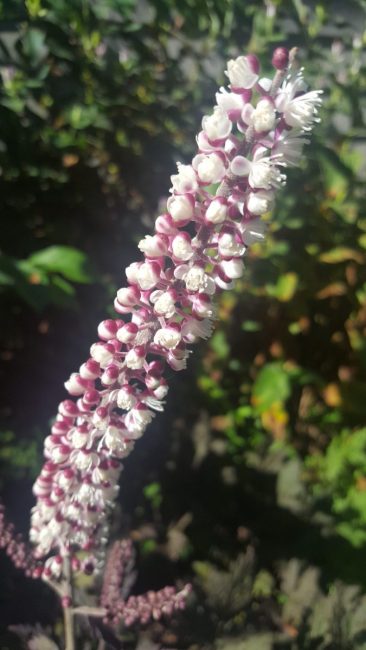Your cart is currently empty!
Transitions present themselves in myriad ways: a change of seasons, life changes and milestones or even walking through a literal doorway. The transition from late Summer to Autumn seems most abrupt to me. Do you feel the same? The air seems suddenly cooler and the sun that much lower in the sky than the day prior.
Alas, Autumn presents a time for celebrating ends of cycles as well as going inward, collecting our reserves and examining our interior lives. It is the time for root medicine, when leaves are exhausted and plant energy goes down to the roots. It is a time to reflect upon the archetype of Hecate.
Bring Your Torches, Hecate!
Transitions, New Moons, Dark Moons, Gateways and Crossroads have long been under the auspice of the Hecate archetype. From ancient Egyptian “Hekit” to “Hecate/Hekate” in Hellenic Greece this figure reigned over the literal and figurative gaps in life that can be incredibly shaky & scary: birth and death as well as crossroads (i.e., decisions). Personification of the Hecate archetype was often a three bodied and headed female statue set at actual cross-roads. She was the triple goddess (maid/mother/crone) at home in the underworld, earth and celestial sky. Her 3-way nature allowed her to see near and far into the past, present and future.


Tools of Illumination
Hecate was not afraid of literal and figurative darkness with torches, keys, rope and a dagger in-tow. Torches not only lead the way but provide illumination into dark mysteries that the key could unlock. As Hecate is the patron of mid-wives the rope could be seen as an umbilical cord. The rope may also symbolize a way to yoke ourselves to the world and our true selves (here I reference “yoke” as in “yoga”). Similar to Buddhist deities the dagger may cut through illusion that the torches illuminate, and the key unlocks. Hecate can cut through crap and get to the heart of things. Hecate has the power to bring fear into the heart of fallacy and expose our “shadow side.”
When at cross-roads in life, Hecate demands we look inward and reflect upon deceptively simple questions: Where have you been? Where are you now? Where are you going?
The Hecate archetype embodies the downward (i.e., underworld, roots) energy of Autumn to help us go inward. As patron of New (“Dark”) Moons she helps us reflect and store reserves so we may disregard distractions in favor of illumination. From this we may pause, then cut through illusion and transition into manifesting our energy onwards, upwards or elsewhere.
This may be why Hecate was the deity sent down to Hades to find Persephone and reunite her with the Earth-Mother Demeter. Hecate could see in the darkness. Hecate provided the tools needed to make whole of what was broken.
Plants of Hecate
Two plants that that grace the gardens each late September into October are Snakeroot/Cohosh (Actaea simplex) and Monkshood (Aconitum carmichaelii). Although both plants have alluring flowers, their medicine lays in their respective roots. Root medicine aligns with Hecate’s oversight of the dark mysteries of birth, sexual health and even death. (Noted Disclaimer: I am using poetic license and fringing on hyperbole in this article as Actaea simplex is related to the woman’s herb Black cohosh (Actaea racemosa). I am not claiming this plant is the same as Black cohosh.)

Life Sustaining Fragrance of Snake Root
Late September is time for some of the cohosh to bloom, notably the fragrant Snakeroot (A. simplex) pictured above. It is a close relative to Black cohosh (Actaea racemosa formerly Cimicifuga racemosa) a medicine celebrated for women’s health. Although true Black cohosh blooms earlier in the year, I am calling on the symbolism of Actaea simplex to celebrate Hecate’s time, though some may argue Hecate’s time is year-long! The honeyed-sweet smelling flowers of this Autumnal bloomer can be detected from several feet away–I stop in my tracks each time I set foot outside my door! The fragrance is that perfuse and intoxicating! One can only imagine how the bees and myriad other insects visiting these plants detect the volatile aromas from miles away, harkening them to stop by and feast on sweet nectar. Reflecting on the late season-giving nature of this botanical being sings songs how nature abundantly gives before she takes away.
Deadly Beauty of Aconite
With birth and life we always have death. This is where one of Hecate’s dark plants, Aconitum sp. (called Aconite, Wolfbane and Monkshood among other names), comes in. All parts of the plant are poisonous (actions are on the nervous system) but the roots, to be collected in the winter or early spring, give the most desirable medicine and are the most toxic parts of the plant. There are several species of Aconite spanning both geography of Eur-Asia and time as several ancient civilizations poisoned their arrows with Aconitum sp. for hunting purposes (hence “Wolfbane”). I’ve asked this dark beauty to live in my Eastern-exposed garden near the Actaea, Toad Lily, Solomon’s Seal, Lady’s Mantle, Spice bush (and other plant friends) for years. It provides late season beauty and color all the while knowing we must be careful around the plant. Aconite symbolizes the end of things: seasonal and literal death. But I don’t believe in being fearful of its potency but respectful. Just as we should respect the archetype of Hecate.

Hecate asks us to slow down, pause and observe before acting. Each season’s transition and New Moon present an opportunity to revel in what Hecate embodies: stillness, contemplation & mystery.
Connect with the new moon and Hecate through Luna Aroma episodes on my podcast, Essential Aromatica. Thank you for taking time out of your day to read this article. May wisdom of the Hecate archetype bring you resilience and elucidation.



Leave a Reply